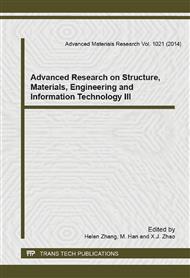p.190
p.196
p.200
p.205
p.209
p.214
p.218
p.225
p.229
Numerical Estimation of Ship Resistance Using CFD with Different Turblence Model
Abstract:
As computers and computational methods continue to develop, the possibilities of using Computational Fluid Dynamics (CFD) in the ship design process is rapidly increasing. Potential flow methods, and even simpler methods, are used regularly, whereas viscous calculations, using Reynolds Averaged Navier-Stokes (RANS) models, are rapidly becoming feasible with respect both to the necessary computational resources and the achieved accuracy. Scale-model tests usually provide resistance and powering curves, which are difficult for computations to reproduce, as well as providing detailed data in important regions. Computations provide an overall picture of the flow that can help in its understanding and thus also in the hull development process. A combination of model tests and computations appears to be the best approach to develop novel hull concepts, and should be promoted even further. However, even RANS have limitations, mainly for applications where small-scale and/or unsteady flow phenomena are of interest but also when new, innovative designs are developed, the reliability of RANS may be problematic. This present work, describes the implementation of CFD techniques for determining the calm water resistance of a ship at different speeds. The ship hull flow is analysed for different ship speeds in calm water conditions. The results obtained from CFD analysis are compared with available standard results.
Info:
Periodical:
Pages:
209-213
Citation:
Online since:
August 2014
Authors:
Price:
Сopyright:
© 2014 Trans Tech Publications Ltd. All Rights Reserved
Share:
Citation:


